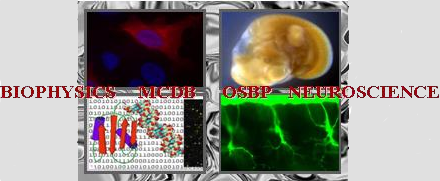Poster abstracts
Poster number 18 submitted by Nishanthi Panneerselvam
Protein engineering approaches to understand the role of surface residues in the four helix bundle model protein Rop
Nishanthi Panneerselvam (Biophysics)
Abstract:
Deciphering the relationship between protein sequence and structural stability is important in understanding the effects of mutation on protein folding. This has applications in both industrial and therapeutic protein design.Rop is a 63 aminoacid residue four-helix bundle protein that controls the ColE1 plasmid copy number in E. coli. It has a well developed GFP assay for in vivo activity which helps us screen for best mutants after enrichment for active variants. Cells with active Rop tend to grow faster as the ones with inactive ROP have a higher metabolic load. Surface residues and surface electrostatics seem to play an active role in maintaining protein stability. A combinatorial library randomizing five surface positions in Rop to NNK (K=G or T) codons was constructed in a previous study. The surface library randomized five residues E39, S40, D43, D46 and E47. Interestingly, the consensus was positively charged residues in the place of negatively charged residues from wild-type. Specially, lysines were found more than arginines. To delve into this, all these five positions were individually mutated to Lys and Arg. The stability and activity data show some interesting differences between the Lys and Arg mutants, where one wouldn’t expect a surface point mutation to make a big difference. Free energy calculations are in progress using Gibbs-Helmholtz analysis. A related study is generating all possible point mutants in ROP. If all the possible point mutants in a protein are subject to moderate selection for activity or function, deep sequencing (high-throughput) can measure the relative abundance of mutants in a bulk competition experiment which in turn gives the relative fitness of each mutant. Preliminary data includes proof-of-principle selection experiments in three positions of Rop where variants were enriched 1,000 fold for activity. Analyzing the fitness landscape of Rop will yield each mutant’s competitive advantage/disadvantage.
Keywords: Protein engineering, Protein stability, Surface residues
